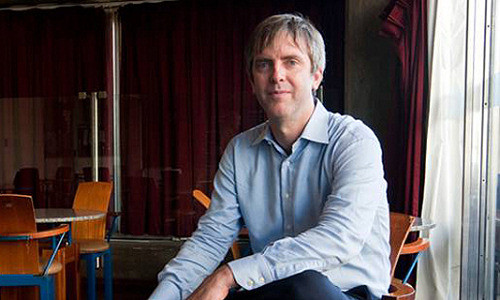“We’re going to be able to write DNA. What do we want to say?” Professor Drew Endy of biological engineering asked this question as he introduced the first international meeting on synthetic biology, which was held at the Tang Center last month.
Characterized as “the first conference of its type, anywhere” by Thomas F. Knight Jr., senior research scientist in the Computer Science and Artificial Intelligence Laboratory (CSAIL), the meeting brought together biologists and computer scientists from around the world.
Simply put, synthetic biology means “leveraging natural structures as ways of building things on the molecular scale,” said Knight. He, along with Endy and CSAIL research affiliate Randy Rettberg, spoke at the conference, called Synthetic Biology 1.0.
“If you can write DNA, you’re no longer limited to what is but to what you could make,” said Endy. “The science you get out of that is more than ‘Here’s this gene and what it does.’ It’s ‘What are the physical limitations of biological systems?'”
Work in synthetic biology has progressed for two decades, but researchers are only at the preliminary stages of being able to engineer biological systems, said Endy. He compared synthetic biology today to mechanical engineering in the 1800s, when machine components had yet to be standardized. Thanks to the eventual completion of that process, “we no longer have to think about the direction of the threading on a screw,” said Endy. Similarly, biological engineers at MIT and elsewhere are working to standardize biological parts, such as ribosomes and other cell components.
One advantage of doing research in this new field at MIT is that “there’s a nice mix of people here who have deep knowledge of engineering theory and processes. There are people here who remember when engineering fields weren’t established. They can apply the experiences of the past to this new field,” said Endy.
In a talk titled “Biological Simplicity,” Knight used Legos to demonstrate the usefulness of standardized parts.
“You can put them together however you want,” said Knight. “Can we construct a chromosome from standardized parts?”
Holding up a silicon chip, the former silicon designer explained that he applies to biological systems the same tools he used to control the complexity of a billion-component silicon chip. He pointed out that while biologists celebrate the “wonderful complexity” of biological systems, “engineers cherish the simplicity of systems.”
For instance, he described his work on rewriting the genome of a microorganism called mesoplasma. One way to do this is to “take stuff out until it breaks. An alternative to understanding complexity is to remove it,” he said to laughter from the audience. He added that this approach could lead to “new science and novel engineering.”
“There was a sense that this was the beginning of something that could be important,” Knight said after the conference. “There’ve been many people doing this for a long time. It’s good to realize we all exist and that there’s a set of shared goals.”
Story Source:
The above story is based on materials provided by MIT News Office, Lauren J. Clark.





